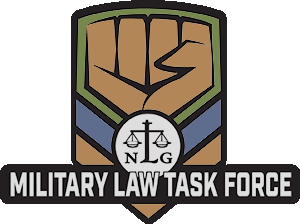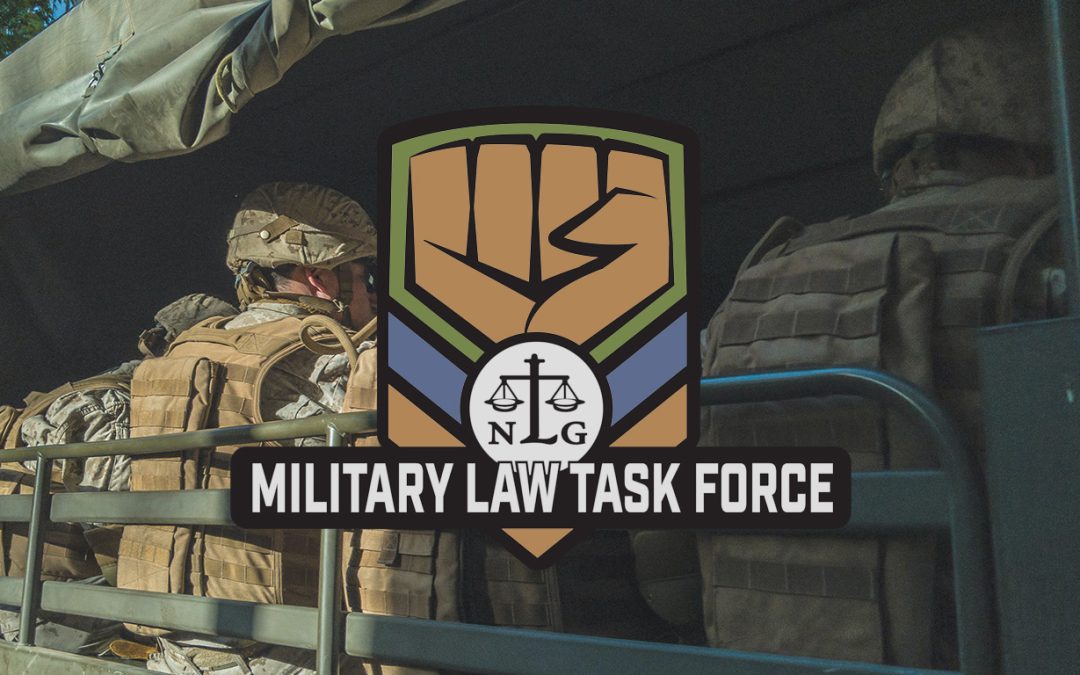A basic guide to how the VA system works and how to get earned benefits, along with practice pointers for vets and their advocates.
By Becca von Behren
Whether a service member wants to stay in the military or is fighting to get out, eventually, that person will be a veteran, and the Department of Veterans Affairs may play a significant role in the transition from active duty to veteran status.
This article gives a very basic overview of some of the more relevant principles of VA benefits, how the VA system works and some common myths about benefit entitlement. A few “practice pointers” are included to help avoid mistakes that newly discharged people often make in their encounters with the VA.
Common Misperceptions about the VA
We have represented veterans before the Department of Veterans Affairs (formerly, the Veterans Administration), for over 23 years. During this time we have observed that many active duty personnel and newly discharged vets often hold a great deal of misinformation about the VA that results from longstanding “military folklore,” rumors, “real life stories” about others taken out of context and half-truths gleaned from government-issued pamphlets.
One misperception we have noticed is the notion that the VA is somehow connected to the Department of Defense. In reality, the VA is completely independent of the Defense Department. There are very limited areas in which the VA is bound by determinations made by the military such as the length of time served, the initial degree of impairment awarded in medical discharge cases (but the VA can increase the rating if appropriate) and basic record entries regarding awards, training, etc.
The most common misperception is that the character of discharge that a service member receives from the military (i.e. Other than Honorable, General, Dishonorable) always determines his or her eligibility for benefits from the Department of Veterans Affairs. This is not the case. For example, the VA can award basic benefit eligibility in all cases in which a veteran received an Other than Honorable discharge or even a Bad Conduct discharge from a special court-martial sentence through a process called a “character of service determination.” The only characters of discharge that are complete bars to VA benefits are Bad Conduct or Dishonorable discharges given as part of the sentence of a general court-martial. (1)
Practice Pointers:
1) Do not let a veteran, or soon-to-be-discharged person, assume that his or her military record will automatically disqualify or qualify him or her for VA benefits.
2) Advise anyone facing discharge to secure copies of all military medical and personnel records. The VA will not automatically get these records from the service branch once a claim is made, and the branch will not always keep a complete copy once the service member is separated. The VA Regional Office will order your records once you initiate a claim, but the process is slow, and it is not guaranteed that the records it receives will be as complete as the records you would receive if you requested them prior to your discharge.
‘Basic’ and ‘Specific’ Benefit Eligibility
Veterans are eligible for many different benefits from the VA, however the rules for eligibility depend on many different factors, and each benefit comes with its own rules for eligibility. This makes determining eligibility for benefits exceedingly difficult.
Because there are so many factors involved in determining eligibility, it helps to break the factors down into two categories: factors that determine “basic” eligibility, and factors that determine “specific” eligibility. Each benefit has basic eligibility requirements that relate to the type of discharge a veteran received and the amount of time the veteran served. If a veteran does not meet the basic eligibility requirements for a benefit, he or she cannot receive the benefit. If a veteran does meet the basic eligibility requirement, the specific eligibility requirements will determine what the exact benefit will consist of.
For example, basic eligibility for VA Non-Service Connected Pension requires that a veteran have at least 90 days of active duty service, including one day during a period of wartime. If the active duty occurred after September 7, 1980, you must have served at least 24 months or the full period that you were called up (with some exceptions). You must also be age 65 or older with limited or no income, or totally and permanently disabled. (2)
Specific eligibility for Non-Service Connected Pension, meaning the exact amount of money you will receive per month, will depend on your “countable” family income and the severity of your disability.
Basic Eligibility for VA Home Loans requires an honorable or a general discharge, but the time served on active duty is dependent upon the era during which a veteran served. For example, if a veteran served during the Vietnam era, he or she is only required to have served 90 days of active duty. However, if a veteran served from August 2, 1990 to the present, he or she must have served 24 consecutive months, or the full period (at least 90 days) for which you were called or ordered to active duty. (3) Specific eligibility for the home loan depends on the terms involved in the sale of the home and the vet’s credit, etc.
Service-connected disability benefits are somewhat different in that basic eligibility is not affected by length of service. However, an honorable or general discharge is still required (unless the VA makes a favorable character of service determination). (4)
Specific eligibility for service-connected disability benefits is determined by factors such as the timing of your initial injury and the degree to which you are still disabled by that injury.
These are examples of factors affecting just three types of benefits, but they illustrate the types of factors that often combine to determine eligibility.
Practice Pointers
1) Whenever someone facing discharge says that someone in a “position to know” has assured them they will receive benefits regardless of the type of discharge they are receiving, advise them that they should rely on VA source materials and not oral representations.
2) Fairly comprehensive but easy-to-read materials are available on the VA’s website that describe the requirements for benefits. Encourage the veteran or soon-to-be veteran to become familiar with them. (http://benefits.va.gov/benefits/)
Service-Connected Disability Compensation
One of the most important benefits available to veterans who leave service with one or more disabilities is called Service-Connected Disability Compensation. Disability compensation is a tax-free benefit paid monthly to veterans who 1) have a disability that was incurred or aggravated in the line of duty in the active military, naval, or air service, and 2) is considered at least 10% disabled because of such disability. (5) Compensation may also be paid for disabilities that arise after military service, but are considered to be secondary to disabilities that occurred in service, or related to the circumstances of military service. (6)
The benefit amount is graduated on a scale from 10 percent to 100 percent in increments of 10. A veteran is assigned a rating according to the seriousness of symptoms as they affect “social and industrial adjustment.” Some injuries, such as the loss of a limb, are automatically rated at a certain percentage. Other conditions are rated depending upon how disabling the symptoms of the condition are. For example, post traumatic stress disorder can be rated at 10%, 30%, 50%, 70% or 100% depending on how severe the VA determines the veteran’s symptoms are.
The VA’s “Schedule for Rating Disabilities” describes hundreds of conditions and their corresponding ratings. Formulae for rating conditions not included in the schedule, for rating multiple disabilities, and for additional ratings due to un-employability are also defined in the schedule. (7)
The severity of a veteran’s disability will be determined using a “Compensation and Pension Exam,” (“C&P exam”) at a VA medical center. The VA physician who conducts the C&P exam will issue an exam report which, in theory, is considered along with the veteran’s service medical records and any VA hospital or available outside medical records by an adjudicator at a VA Regional Office. This adjudicator will take all of the available evidence into consideration, and using the “Schedule for Rating Disabilities,” determine a veteran’s disability rating.
Practice Pointers:
1) Always advise someone facing discharge with a service-connected disability claim to secure copies of all medical records. This applies whether or not a member is being considered for medical discharge or retirement. There is no guarantee that all records necessary to future resolution of a VA claim will be available.
2) Civilian medical reports are also very valuable, especially when prepared by a specialist in situations where the military refuses to treat or diagnose someone properly. The VA can rely on non-government sources of documentation and frequently does so.
3) Advise someone facing a discharge to secure statements from people he or she worked with that corroborate in detail any injury or disease observed, regardless of whether or not treatment and resulting medical evidence exists. Often, service buddies will be reluctant to provide written statements while they are still on active duty, so it is a good idea to get their “home of record” address. This way, you have a good chance of contacting his or her family and tracking down a witness statement after their duty ends.
4) Always impress upon a person about to be discharged the importance of filing a claim for service-connected disability as soon as possible after discharge. It is generally easier to prove that a disability was incurred or aggravated by service the closer you are in time to your discharge. And, in fact, some conditions have presumptive periods, such as one-year from discharge, in which a condition that manifests itself to a moderate degree is presumed service-connected. (8)
Character of Service Determinations
As stated before, many VA benefits require either an Honorable or a General character of discharge for baseline eligibility. In order to become eligible for VA benefits, many veterans with disqualifying characters of discharge will apply to the military’s Discharge Review Board and/or the Boards for Correction of Military Records for a discharge upgrade. However, an often-overlooked alternative to these lengthy processes is an application to the VA for a favorable character of service determination. While the VA cannot change the character of a veteran’s discharge, the VA can decide to grant a veteran VA benefits in spite of a less than honorable character of discharge.
The VA is able to grant a favorable character of service determination to veterans with ‘Other than Honorable’ discharges and ‘Bad Conduct’ discharges that were given as part of the sentence of a special court martial. Unfortunately, the VA cannot grant benefits to a veteran who has a Bad Conduct discharge or a Dishonorable discharge as a result of a general court martial.
There are some other instances where VA authority to grant benefits is murky. For example, if a veteran received an ‘Other than Honorable’ discharge after being AWOL continuously for at least 180 days, by regulation, the veteran is ineligible for VA benefits. However, the VA may still grant a favorable character of service determination if it finds there were “compelling circumstances to warrant the prolonged unauthorized absence.” (9)
A veteran may want to seek a character of service determination over a discharge upgrade for several reasons. While the chances of being granted a favorable character of service determination vary among different VA Regional Offices, it is safe to say that a veteran stands a much better chance of getting a favorable character of service determination than a discharge upgrade. Moreover, the time it takes for the VA Regional Office to make a character of service determination is also shorter than the time it takes the military’s Discharge Review Boards or the Boards for Correction of Military Records to consider a discharge upgrade application. Finally, a favorable character of service determination can only help a later discharge upgrade case before a Correction or a Review Board.
Practice Pointers:
1) A veteran should be encouraged to document a case for a character of service determination in the same way he or she would for a discharge upgrade case (e.g. obtain “buddy statements” before discharge, get the “home of record” address of potential witnesses and keep all service documents).
2) Remember that, currently, a veteran must have at least 24 months of continuous active duty to establish basic eligibility. If a veteran does not have this, the VA will not adjudicate the case except in service-connected disability claims, which do not have a minimum time served requirement.
3) Also, a veteran who served for more than one enlistment retains benefit eligibility when the first service period resulted in an Honorable discharge no matter what type of discharge was given for the subsequent discharge. For example, if you complete one full hitch in the military with an Honorable discharge, and re-enlist the same day, or the very next day, and your second hitch ends with a discharge that was neither Honorable nor General, you have basic eligibility for VA benefits based upon your first hitch. That is even true if your second hitch ended with a Bad Conduct or Dishonorable discharge after a court-martial.
Disability and Character of Service Claims Procedures (10)
A disability benefits claim starts at the VA Regional Office (“VARO”) nearest to the veteran. A veteran initiates a claim either by filing a VA Form 21-526EZ, (11) or “informally” by letter to the VARO. A veteran may also file his or her claim online using eBenefits. (12)
A veteran may have more than one claim at any given time, and a claim can contain any number of physical and/or mental conditions. The VA will adjudicate each separately. The claim is “developed” by an adjudicator at the VARO through acquisition of VA medical reports, service personnel and medical records, whatever evidence the veteran submits and the results of the C&P exam. Once the development phase is complete, the adjudicator will issue an initial decision called a “Rating Decision.”
If the veteran who filed the claim for service connected disability compensation has an “Other than Honorable” or “Bad Conduct” discharge, a character of service determination must be made, and a favorable determination granted, before any of the claim development process may proceed.
In order for a claim for service-connected disability compensation to be successful, a VA adjudicator must find that the veteran 1) suffered an injury during service, 2) is currently disabled, and 3) find a nexus between the in-service injury and the current disability. (13)
The initial “Rating Decision” should state what the VA decided and provide an explanation as to how the decision was arrived at. In reality, the Rating Decision is often nothing more than a conclusory statement that does not offer any insight into how the claim was decided.
If a veteran is dissatisfied with all or part of the Rating Decision, he or she should file a “Notice of Disagreement” within one year of the date of the Rating Decision. The Notice of Disagreement can be in any form, so long as it can reasonably be construed as such. (14) Once a Notice of Disagreement is filed, the VARO must prepare a “Statement of the Case” which is essentially an elaboration of the Rating Decision and is intended as a reference source for further administrative appeal to the Board of Veteran Appeals.
A veteran has 60 days from the mailing date of the Statement of the Case, or one year from the date of the initial Rating Decision – whichever is later – to file a formal appeal to the Board of Veteran Appeals (“BVA”). An appeal to the BVA is made on a VA Form 9. (15) A Form 9 will be attached to the Statement of the Case.
On the Form 9 the veteran can elect to have a personal hearing in front of the BVA at his or her local Regional Office or a videoconference hearing, or submit the case on the record with no hearing. Additional evidence can be submitted to the BVA at any time prior to its consideration of the case.
Additional evidence and argument also can be submitted with or after an appeal to the BVA and at any time after the initial Rating Decision in support of a “Request for Reconsideration” at the VARO level. A claim remains “open” for the VARO’s reconsideration even after an appeal to the BVA has been made. It is not uncommon for a Regional Office to initially deny a claim, but later grant what the veteran requested upon receiving additional medical evidence and/or a well-reasoned argument as to why the initial Rating Decision was wrong.
If a veteran disagrees with a decision made by the Board of Veterans Appeals, a final appeal to the Court of Appeals for Veterans Claims (“CAVC”) can be made. An appeal to CAVC must be made within 120 days of the mailing date of the final decision of the Board of Veterans Appeals. (16)
In summary, a claim starts at the VARO and can be appealed to the Board of Veteran Appeals. Throughout this process, additional evidence can be submitted and the VARO can reconsider its initial decision based on such evidence. The BVA can also consider additional evidence and argument up to the point of its final decision. Once the BVA has issued a final decision, the veteran has 120 days to appeal to the Court of Appeals for Veterans Claims but cannot count on any further evidence to be considered by the Court.
In theory, a VA claim can never die. Even after an adverse decision from CAVC, or, in the event that a deadline is missed, “new and material evidence” can “re-open” a claim.
Representation before the VA: Sources of Help
Traditional veterans organizations such as Disabled American Veterans, American Legion, Military Order of the Purple Heart, etc., provide free non-lawyer representation to veterans with claims before the VA.
Some of these representatives do good work, but they are typically swamped with cases. A common complaint from veterans about the traditional organizations is that their case often gets transferred among representatives. Given that a claim can take three years or more to resolve, this often means a veteran’s claim can be transferred more than once. Having a case transferred several times between overworked staff does not make for the most effective representation.
The ideal situation is for a veteran to get competent free representation, but this is not usually possible. A big contributor to the problem is that attorneys are barred from collecting fees at the initial claim level, and even later in the process, fees are subject to limitations.
For veterans who are unable to obtain free, competent, legal representation, there is an excellent Practice Manual for VA Advocacy, the Veterans Benefits Manual. The Manual is available for order here: http://www.nvlsp.org/store/veterans-benefits-manual-2011.
There are also a variety of self-help materials available from Swords to Plowshares at: http://www.swords-to-plowshares.org/guides/.
Practice Pointers:
1) Encourage the soon-to-be or new veteran to seek help with a VA claim by shopping around. Some parts of the country still have excellent, non-traditional veterans groups, legal service organizations or volunteer Bar Association programs that provide free, quality representation before the VA.
2) Warn potential VA claimants that there is no guarantee they will be adequately represented by traditional organizations, and that they should expect to be very involved in their own claim if they choose to have a traditional organization as their representative.
3) It is crucial that a veteran keep the VA and any representative advised of his or her current address. The VA will not necessarily send correspondence to a veteran’s representative and the veteran at the same time, and a veteran’s case can be closed if the VA is unable to correspond with the veteran.
4) It is equally crucial that the veteran secure and keep copies of everything submitted to and received from the VA. The VA often loses documents, so it is imperative that you keep an organized date-stamped personal file in case the VA later claims a deadline was missed.
Disclaimer
This article is not intended to impart specific legal advice of any sort. The workings of the VA and advocacy before it are discussed in detail in the Veterans Benefits Manual, mentioned above. Advocates should understand that much of what veterans perceive about VA claims is based on what they hear while in the military, and much of that may be sheer myth. We hope this article helps to identify some of the common areas in which those myths occur and gives an overview of how some of the VA claims system operates.
End notes
1. 38 U.S.C. § 101(2); 38 C.F.R. § 3.12 (c)(2).
2. 38 USC § 1521.
3. 38 USC § 3702.
4. 38 USC § 1110; 38 CFR § 3.12.
5. 38 CFR § 3.4(b).
6. 38 CFR § 3.310(a).
7. 38 CFR Part IV.
8. 38 USC § 1112.
9. 38 CFR § 3.12.
10. For a complete and thorough overview of the VA claim adjudication process please reference the VA Adjudication Manual M21-1MR at http://www.benefits.va.gov/WARMS/M21_1mr1.asp.
11. Available here: http://www.va.gov/vaforms/form_detail.asp?FormNo=21-526EZ.
12. eBenefits is available here: www.ebenefits.va.gov/.
13. 38 CFR § 3.303.
14. VA Manual, M21-1MR, Part I, Chapter 5, Section B.
15. 38 C.F.R. § 20.202.
16. 38 U.S.C. § 7266.
About the author
Becca von Behren is a Staff Attorney at Swords to Plowshares which provides free legal assistance to veterans seeking VA benefits and military discharge upgrades. Becca is a member of the San Francisco NLG Demonstrations Committee, a member of the MLTF steering committee, and co-chair of the NLG’s Queer Caucus. She previously worked as a Skadden Fellow at Disability Rights Advocates, using impact litigation and legal advocacy to ensure that Iraq and Afghanistan veterans with mental illness receive appropriate medical services and benefits.
This article was written as an update to an article that first appeared in the November, 1996, issue of On Watch by Tom Turcotte, then Staff Attorney and now Of Counsel at Swords to Plowshares. Tom is a long-time member of the MLTF, and one of the éminences grise of veterans advocacy.



